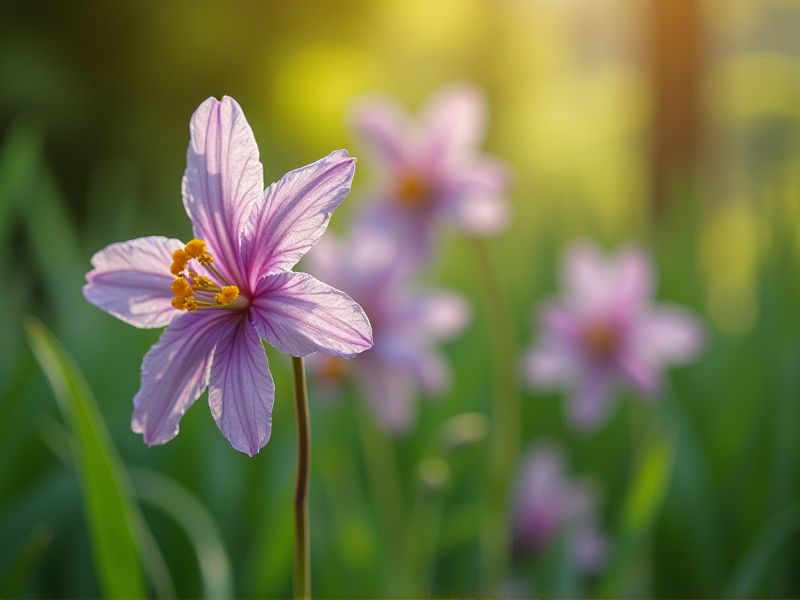
Scented plants enhance the atmosphere of gardens, creating a delightful sensory experience. Varieties such as lavender, rosemary, and jasmine not only offer pleasing aromas but also attract beneficial pollinators like bees and butterflies. Incorporating herbs like mint and thyme can add freshness while serving culinary purposes, enriching both your garden's fragrance and your kitchen. Seasonal blooms, including peonies and gardenias, provide bursts of fragrance that change throughout the year, keeping your outdoor space engaging. Selecting scented plant species tailored to your local climate ensures a thriving, aromatic garden for years to come.
List of some Scented plants that perfume gardens
- Rose (Rosa)
- Lavender (Lavandula)
- Jasmine (Jasminum)
- Gardenia (Gardenia jasminoides)
- Honeysuckle (Lonicera)
- Lilac (Syringa)
- Sweet Pea (Lathyrus odoratus)
- Mock Orange (Philadelphus)
- Tuberose (Polianthes tuberosa)
- Hyacinth (Hyacinthus)
Important things about Scented plants that perfume gardens
Types Of Scented Plants
Scented plants that perfume gardens include a variety of species, each offering distinct fragrances that enhance outdoor spaces. Examples like lavender (Lavandula) and jasmine (Jasminum) provide soothing aromas, attracting pollinators and creating tranquil environments. Herbs such as basil (Ocimum basilicum) and mint (Mentha) not only add culinary value but also release delightful scents when brushed against. Incorporating these fragrant plants into your garden can significantly elevate your sensory experience, making it a more inviting and enjoyable space.
Benefits Of Aromatic Plants
Scented plants, such as lavender, rosemary, and jasmine, enhance gardens with their delightful fragrances while offering various benefits. These aromatic species not only attract beneficial pollinators like bees and butterflies but also deter unwanted pests, helping create a balanced ecosystem. Aromatic plants can improve your mental well-being by boosting mood and reducing stress through their therapeutic scents. In addition, by incorporating these fragrant plants into your outdoor space, you cultivate a sensory experience that elevates the overall ambiance of your garden.
Seasonal Fragrance Variations
Scented plants such as lavender, roses, and jasmine are essential for creating seasonal fragrance variations in your garden. Lavender emits a calming aroma during summer, attracting pollinators and enhancing outdoor enjoyment. In spring, the intoxicating scent of blooming roses fills the air, symbolizing romance and renewal. Jasmine, known for its sweet, intense fragrance, provides a captivating evening scent in warmer months, transforming gardens into sensory retreats.
Best Growing Conditions
Scented plants thrive in well-drained soil enriched with organic matter, which supports their robust growth and aromatic qualities. Ensure they receive at least six hours of sunlight daily, as this promotes flowering and enhances fragrance intensity. Regular pruning helps maintain their shape and encourages new growth, further boosting their scent output. Watering should be consistent but moderate, allowing the soil to dry slightly between sessions to prevent root rot while ensuring healthy development.
Companion Planting With Fragrances
Scented plants play a vital role in companion planting, enhancing both the aesthetic and olfactory qualities of your garden. Varieties like lavender, jasmine, and rosemary not only attract beneficial insects but also create a soothing atmosphere that enhances your outdoor experience. Planting these fragrant species alongside vegetables such as tomatoes or peppers can improve their growth, as the scents can deter pests while promoting a harmonious ecosystem. Incorporating these aromatic plants fosters a multi-sensory garden, allowing you to enjoy the beauty and fragrance of nature while reaping plentiful harvests.
Effect On Pollinators
Scented plants, such as lavender and jasmine, play a crucial role in attracting pollinators like bees, butterflies, and hummingbirds to your garden. The natural fragrances emitted by these plants signal nectar sources, creating a biodiverse ecosystem that supports both flora and fauna. By cultivating scented flowers, you enhance not only the aesthetic value of your outdoor space but also contribute to the vital process of pollination, which is essential for food production. Incorporating fragrant plants into your garden can lead to increased pollinator visits, ultimately promoting healthier plants and higher yields in your garden.
Edible Scented Plants
Scented plants like lavender (Lavandula) and rosemary (Rosmarinus officinalis) not only enhance the aesthetics of your garden but also emit pleasant aromas that attract pollinators. In addition to their enchanting fragrances, many of these plants possess culinary uses; for instance, basil (Ocimum basilicum) brings a delightful scent and flavor to your kitchen dishes. Jasmine (Jasminum) and honeysuckle (Lonicera) are excellent choices for creating a delightful sensory experience, especially during the evening hours when their scents become more pronounced. Incorporating a variety of these aromatic plants in your garden can create a harmonious blend of beauty and functionality, enriching both your outdoor space and culinary endeavors.
Scent Intensity Factors
Scent intensity in scented plants significantly influences the overall ambiance of your garden. Factors such as plant species, environmental conditions, and seasonal variations all contribute to the strength of fragrance emitted by flowers and foliage. For example, roses (Rosa spp.) typically offer a strong aroma, while lavender (Lavandula spp.) provides a more subtle yet captivating scent. By selecting a variety of aromatic plants and paying attention to their growing conditions, you can create a garden that delights the senses and enhances your outdoor experience.
Maintenance And Care
Scented plants such as lavender, rosemary, and jasmine can transform your garden into a fragrant oasis, offering aromatic beauty year-round. To maintain these plants, ensure they receive adequate sunlight and well-draining soil, as most thrive in sunny conditions. Regular pruning encourages healthy growth and enhances fragrance, while mindful watering helps prevent root rot and promotes lush foliage. Incorporating mulch can also protect roots and retain moisture, creating an ideal environment for your aromatic garden.
Fragrance Release Times
Scented plants play a crucial role in creating aromatic gardens, enriching outdoor spaces with delightful fragrances. Notable examples include lavender, known for its calming scent, and jasmine, which emits a sweet, floral aroma that attracts pollinators. The optimal fragrance release times often occur during warm evenings or after rain when humidity peaks, intensifying the scents around them. By strategically planting these aromatic species, you can enhance the sensory experience of your garden throughout different seasons.
